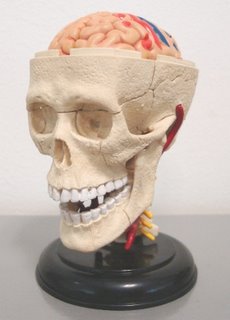 Latest news in the field of stem cell technology!
Latest news in the field of stem cell technology!Scientists have successfully developed a new cell type, called the induced pluripotent cell (iPS) that have many properties of embryonic stem cells, but are produced using adult, rather than embryonic tissues.
Team leaders Professor Shinya Yamanaka of Kyoto University and Professor James Thomson (one of the pioneers who discovered human embryonic stem cells in 1998) of the University of Wisconsin-Madison used slightly different techniques to achieve this goal.
Prof. Yamanaka's group used cells taken from the facial skin of a 36-year-old woman and from connective tissue from a 69-year-old man. Prof. Thomson's group used cells from fetal skin and from the foreskin of a newborn boy.
But their strategy is broadly similar.
Both techniques involved the insertion of stem cell genes (Yamanaka group used Oct4, Sox2, Klf4 and c-Myc whereas Thomson group used Oct4, Sox2, Nanog and Lin28) using retroviral vectors.
The advantage of this new approach is that it circumvents the problem of shortages in human eggs and surplus embryos. It also requires neither cloning nor the destruction of human embryos, considered immoral by many religious groups.
However, both groups of scientists emphasize that their innovation does not render embryonic stem cell research obsolete, nor did they consider such research unethical. They note that the genetic reprogramming technique used could not have been developed without the comprehensive study of embryonic stem cells in the past decade.
Prof. Thomson said that: "This does not mean that it is the end of embryonic stem cell research, if only that we need a gold standard to compare to. It is hardly time to discontinue embryonic stem cell research. But I do believe that over time these cells will be used by more and more labs and human embryonic stem cells will be used by fewer and fewer labs."
Prof. Yamanaka cautioned: "Human iPS cells are similar, but not identical, to human embryonic stem cells. DNA microarray analyses identified differentially expressed genes between the two stem cell lines. Further studies are required to determine whether human iPS cells can replace human ES cells."
In addition, since the iPS cells were produced using retroviruses in both strategies, there is some risk of tumour formation in the recipient.
"We have to be sure the cells are safe," Prof. Yamanaka said. "One of the difficulties about human embryonic stem cells is their tumorigenicity. Because of the usage of retroviruses, iPS cells may be more tumorigenic than human embryonic stem cells. We will have to find a way to avoid retroviruses."
Thus it is too early to consider these cells for clinical applications, but they are useful for the purposes of drug discovery and toxicology.
Other experts in the field are excited by this new development.
Professor Azim Surani at the University of Cambridge said: “It is relatively easy to grow an entire plant from a small cutting, something that seems inconceivable in humans. Yet this study brings us tantalisingly close to using skin cells to grow many different types of human tissues.”
Prof. Ian Wilmut at the University of Edinburgh (part of the team that cloned Dolly in 1997) said: "We can now envisage a time when a simple approach can be used to produce stem cells that are able to form any tissue from a small sample taken from any of us."
Dr. Robert Lanza of Advanced Cell Technology is even more elated. He said that: "This work represents a tremendous scientific milestone -- the biological equivalent of the Wright Brothers' first airplane. It's not practical to use right now, but it might be in a few years. This is truly the Holy Grail -- to be able to take a few cells from a patient -- say a cheek swab or few skin cells -- and turn them into stem cells in the laboratory."
Prof. Douglas Melton of Harvard University suggested that the way forward is to modify gene expression using small molecules rather than retroviral insertion.
"It is not hard to imagine a time when you could add small molecules that would tickle the same networks as these genes."
Amidst the enthusiasm, there is also relief.
Beleaguered stem cell biologist Prof. Jose Cibelli of Michigan State University noted that "the whole field is going to completely change. People working on ethics will have to find something new to worry about."
Would you like to know more?
- Researchers Turn Skin Cells Into Stem Cells (ScienceNOW)
- Scientists Turn Human Skin Cells Into Stem Cells (USNews)
- Breakthrough as stem cells are produced from skin, not embryos (TimesOnline)
- Skin cells transformed without embryos (Yahoo! News)






0 Comments:
Post a Comment